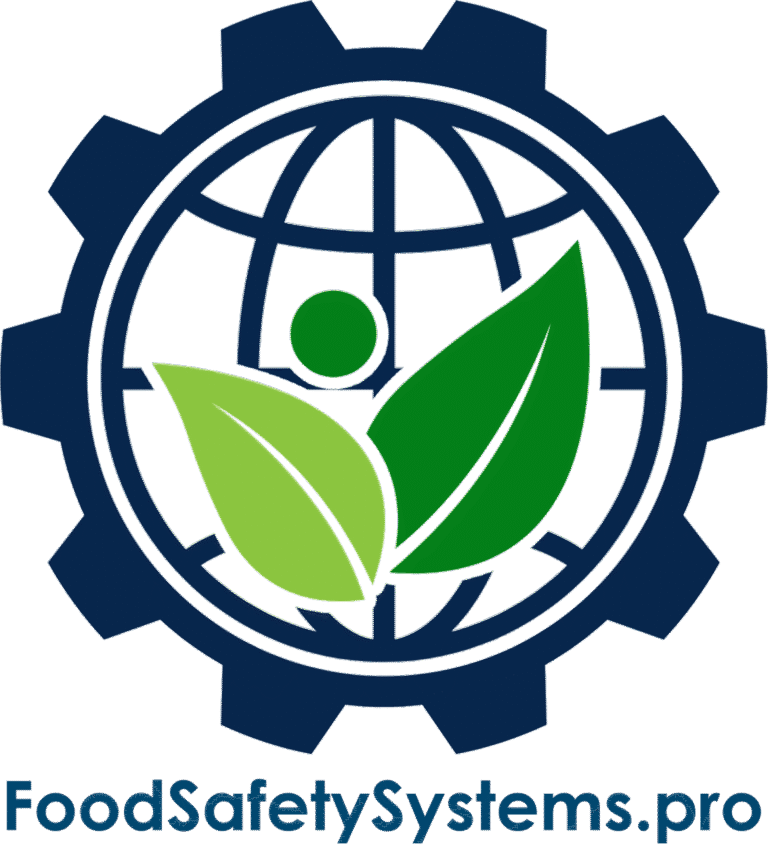Crisis Management Plan
Aligned with SQF Code Edition 9 – System Element 2.9.1
Requirement Overview
SQF Code Edition 9, System Element 2.9.1, requires:
“A crisis management plan shall be prepared by senior management outlining the methods and responsibility for the management of incidents and potential emergency situations that impact food safety, legality, or regulatory compliance.”
A well-prepared crisis management plan helps protect food safety, brand reputation, and business continuity during emergencies, whether triggered by natural disasters, supply disruptions, recalls, or cyberattacks.
Disclaimer: Food Safety Systems is not affiliated with or endorsed by the Safe Quality Food Institute (SQFI). This content is for internal educational and compliance planning purposes only. For official certification guidance, visit www.sqfi.com.

Key Compliance Objectives
-
✓ Define and document roles and responsibilities during a crisis
✓ Maintain an updated emergency contact list
✓ Establish internal and external communication procedures
✓ Test the crisis response plan at least annually
Step-by-Step Compliance Implementation
1. Identify Potential Crisis Scenarios
-
Examples of Crisis Types:
-
• Natural disasters (e.g., floods, earthquakes)
• Power outages or utility failure
• Cybersecurity breaches or data loss
• Product recalls, contamination, or public health outbreaks
Evidence to Maintain:
-
• Crisis risk assessment matrix
• List of scenarios with potential business and food safety impacts
- • Natural disasters (e.g., floods, earthquakes) • Power outages or utility failure • Cybersecurity breaches or data loss • Product recalls, contamination, or public health outbreaks
- • Crisis risk assessment matrix • List of scenarios with potential business and food safety impacts
2. Develop a Written Crisis Management Plan
-
Your Plan Should Include:
-
• Chain of command and role responsibilities
• Emergency contact directory (internal + external)
• Communication flowchart (who to notify and when)
• Procedures for recovery and business continuity
Evidence to Maintain:
-
• Signed and approved crisis management plan
• Organizational chart and contact list
• Version-controlled SOPs for emergency response
- • Chain of command and role responsibilities • Emergency contact directory (internal + external) • Communication flowchart (who to notify and when) • Procedures for recovery and business continuity
- • Signed and approved crisis management plan • Organizational chart and contact list • Version-controlled SOPs for emergency response
3. Assign Roles and Responsibilities
-
Suggested Crisis Team Roles:
-
• Incident Commander (e.g., plant or operations manager)
• Food Safety/QA Lead
• Communications Officer
• Legal or Regulatory Liaison
Evidence to Maintain:
-
• Role assignment forms
• Contact verification and emergency reachability test logs
- • Incident Commander (e.g., plant or operations manager) • Food Safety/QA Lead • Communications Officer • Legal or Regulatory Liaison
- • Role assignment forms • Contact verification and emergency reachability test logs
4. Establish Communication Procedures
-
Communication Plan Must Address:
-
• Internal alerts to staff and key departments
• External communications with authorities, customers, and media
• Designation of official spokesperson(s)
• Use of scripts for client, regulatory, or public announcements
Evidence to Maintain:
-
• Internal and external communication SOPs
• Pre-written notification templates
Escalation protocols
- • Internal alerts to staff and key departments • External communications with authorities, customers, and media • Designation of official spokesperson(s) • Use of scripts for client, regulatory, or public announcements
- • Internal and external communication SOPs • Pre-written notification templates Escalation protocols
5. Test and Review the Plan Annually
-
Verification Activities:
-
• Tabletop drills or full simulation exercises
• Evaluation of response time and decision-making
• Documentation of lessons learned and plan revisions
Evidence to Maintain:
-
• Drill reports with sign-in sheets
• Plan review and update log
• Corrective actions taken after drills or real incidents
- • Tabletop drills or full simulation exercises • Evaluation of response time and decision-making • Documentation of lessons learned and plan revisions
- • Drill reports with sign-in sheets • Plan review and update log • Corrective actions taken after drills or real incidents
Common Audit Findings & Recommended Fixes
Audit Finding
Recommended Action
Outdated emergency contacts
Update annually and conduct reachability tests
Unclear roles or responsibilities
Assign and document team roles
No evidence of plan testing
Conduct and log a crisis simulation or tabletop
Vague communication procedures
Use written SOPs and pre-approved message templates
| Audit Finding | Recommended Action |
|---|---|
| Outdated emergency contacts | Update annually and conduct reachability tests |
| Unclear roles or responsibilities | Assign and document team roles |
| No evidence of plan testing | Conduct and log a crisis simulation or tabletop |
| Vague communication procedures | Use written SOPs and pre-approved message templates |
Auditor Verification Checklist
SQF auditors will typically:
-
• Review the crisis management plan and approval date
• Verify assigned roles and contact information
• Examine records of testing and drills
• Check internal and external communication procedures
Implementation Roadmap
Build Your Program
-
✓ Identify realistic crisis scenarios
✓ Draft and approve your crisis management plan
Train and Validate
-
✓ Assign crisis team roles
✓ Share emergency contacts and communication protocols
Operate and Monitor
-
✓ Conduct drills and simulations
✓ Maintain response readiness
Improve Continuously
-
✓ Review the plan annually
✓ Update following real events or audit findings
Why This Matters?
A robust crisis management plan:
-
✓ Ensures your team is ready to respond effectively
✓ Reduces downtime and protects public health
✓ Strengthens audit readiness and regulatory confidence
✓ Demonstrates your commitment to food safety—even in a crisis
Need Support Developing Your Crisis Management Plan?
Food Safety Systems offers:
-
✓ Editable crisis management plan templates
✓ Emergency contact list formats
✓ Simulation drill guides and evaluation forms
✓ Communication flowcharts and SOPs
Privacy Policy | Terms of Service | Disclaimer
Powered by Consultare Inc. Group, A Compliance Company







